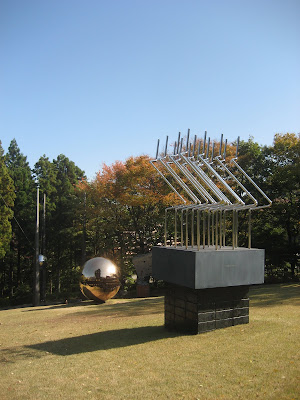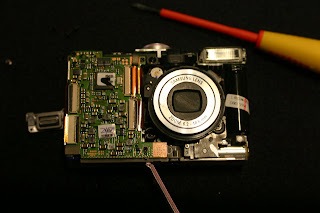As an observation location, I chose to observe the walkway just behind the DAB faculty and ABC building, which apparently is officially called the 'Ultimo Pedestrian Network'. As this pathway always seems to be quite full and links up to the railway tunnel, it seemed the perfect place to observe some urban city walking.

One of the first observations that I made was that, ironically, people carrying more bags were the people walking the fastes. There were also a large amount of people caryying multiple bags, with either a backpack or handbag thrown over their shoulders, and often carrying another bag in each hand on top of that! Being a uni student (and one studying design at that), carrying a million bags is now a familiar practice as we walk to uni lugging around all our essentials for classes that day, however, I was surprised to see that this was not uncommon amongst a variety of groups, including business people.

Another observation was the high amount of multi-tasking going on. Many people were fumbling through bags as they were walking, eating on the go and carrying a cup of coffee, or immersed in their phones. Because the pathway is essentially a long strip of empty space, it was interesting to see how some people took the need to 'see we're you're going' for granted as they assumed nothing was ahead of them, with some looking down at phones for as long as 20 seconds.
From looking at this, I thought of how environments could influence pedestrian behaviour, and how possibly this may be a good direction for further research.
(Images obtained from:
http://penultimo.tumblr.com/post/1522531711/ultimo-pedestrian-network-sexier-than-it-sounds)
 Feldenkrais From Week One
Feldenkrais From Week One 
 back of my head and heels. Ouch! But also sensed the parts in motion. A bit of reflection went on while on the floor: "If I move this way it feels like this but if move slightly differently it feels like this." and I got into a motion that suited me the most. Interesting and a bit tricky.
back of my head and heels. Ouch! But also sensed the parts in motion. A bit of reflection went on while on the floor: "If I move this way it feels like this but if move slightly differently it feels like this." and I got into a motion that suited me the most. Interesting and a bit tricky.




 The second area that was observed within the TAFE was just further up ahead. It featured the "No smoking" sign as an explicit form of communication, however the numerous cigarette butts littering the ground next to it was a clear implicit sign that people are continuing to ignore the rules, whether it be intentional or not.
The second area that was observed within the TAFE was just further up ahead. It featured the "No smoking" sign as an explicit form of communication, however the numerous cigarette butts littering the ground next to it was a clear implicit sign that people are continuing to ignore the rules, whether it be intentional or not.

 Another observation was the high amount of multi-tasking going on. Many people were fumbling through bags as they were walking, eating on the go and carrying a cup of coffee, or immersed in their phones. Because the pathway is essentially a long strip of empty space, it was interesting to see how some people took the need to 'see we're you're going' for granted as they assumed nothing was ahead of them, with some looking down at phones for as long as 20 seconds.
Another observation was the high amount of multi-tasking going on. Many people were fumbling through bags as they were walking, eating on the go and carrying a cup of coffee, or immersed in their phones. Because the pathway is essentially a long strip of empty space, it was interesting to see how some people took the need to 'see we're you're going' for granted as they assumed nothing was ahead of them, with some looking down at phones for as long as 20 seconds.

























